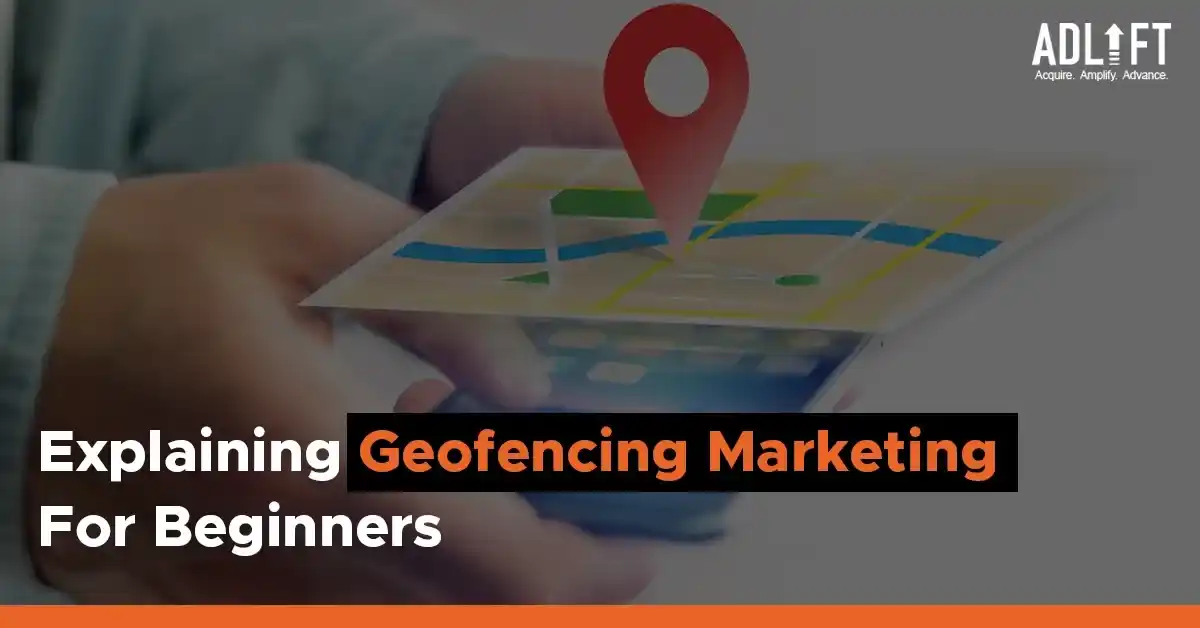Geofencing Marketing Explained: How Location-Based Advertising Works

In the age of mobile technology and personalized marketing, businesses are constantly seeking innovative ways to reach and engage their target audience. Geofencing marketing has emerged as a powerful strategy that leverages location-based advertising to deliver highly targeted and relevant messages to consumers.
In this blog post, we will explore the geofencing marketing concept and how it enhances customer experiences and drives business growth.
Understanding Geofencing Marketing
Geofencing marketing, also known as location-based marketing, is a technique that involves creating virtual boundaries, known as geofences, around specific geographic areas. So, what is geofencing marketing? Geofences can be as small as a single store or as large as an entire city.
When users enter or exit a geofenced area with their mobile device, it triggers the delivery of location-based advertisements, notifications, or other relevant content. This enables businesses to reach potential customers when they are near a physical location, making geofencing a powerful tool for driving foot traffic, boosting conversions, and enhancing overall marketing effectiveness.
Geofencing Marketing Working Process
The next question arises “What is processof marketing by geofencing?” Here’s a step-by-step breakdown of how the process works:
- Defining Geofences: Businesses identify specific geographic areas relevant to their target audience. This can include their stores, competitor locations, event venues, or other relevant points of interest.
- Setting Triggers: Once the geofences are established, triggers are set to determine when to activate the geofencing campaigns. These triggers can be based on a user entering or exiting a geofenced area or specific behaviors such as dwell time or repeat visits.
- Delivering Targeted Content: When a user’s device enters or exits a geofenced area, the geofencing system sends a push notification or text message or displays a targeted advertisement on the user’s mobile device. The content can be tailored to offer promotions, discounts, event reminders, or other relevant information.
- Tracking and Analytics: Geofencing platforms provide data and analytics to track user interactions, measure campaign effectiveness, and gain valuable insights into customer behavior. This information helps refine and optimize future geofencing campaigns.
Benefits of Geofencing Marketing
It offers several key benefits for businesses looking to engage customers in a highly targeted manner. Here are a few advantages it provides:
- Enhanced Targeting: By delivering messages to users close to a physical location, it ensures that the right message reaches the correct audience at a suitable time. This hyper-targeting improves the relevance and effectiveness of marketing efforts.
- Increased Foot Traffic: It can drive foot traffic to physical stores by offering personalized incentives or promotions to users within a specific area. This can be effective for businesses in competitive industries or those looking to boost sales during specific periods.
- Improved Customer Engagement: It enhances customer engagement by delivering timely and relevant content based on a user’s location. Users may respond positively to personalized messages, increasing brand loyalty and customer satisfaction.
- Data-Driven Insights: Geofencing provides useful data and analytics that can be used to measure campaign performance, understand customer behavior, and make data-driven marketing decisions. These insights help optimize future campaigns for better results.
Ending Note
From this blog now, we understand what is geofencing marketing. It creates virtual boundaries and leverages triggers, and businesses can deliver relevant messages and promotions to customers near a physical location.
This technology-driven approach drives foot traffic, enhances customer experiences, and boosts marketing effectiveness. Geofencing marketing utilizes GPS, cellular data, and Wi-Fi signals to determine user locations, enabling real-time, location-based advertising.
With its ability to deliver personalized content, track user interactions, and provide valuable data insights, geofencing marketing presents an exciting opportunity for businesses to connect with their audience and achieve remarkable marketing outcomes.
Categories
- AI
- ChatGPT
- Content Marketing
- Content Marketing & Strategy
- Digital Marketing
- Entrepreneurship
- Google Analytics
- Google Tag Manager
- Google Updates
- Influencer Marketing
- Mobile App Marketing
- Paid Marketing
- Press
- Pubcon
- Search Engine Marketing
- Search Engine Optimization
- SEO
- SEO Tools
- Social Media Marketing
Recent Posts
- How do I Verify My Business on Google to Ace Local SEO? March 17, 2025
- The Pros and Cons of Pay For Performance SEO March 17, 2025
- Website Structure for SEO: A Blueprint for Better Rankings March 17, 2025
- Keyword Cannibalization: Why It Matters for Your Company and How to Avoid It March 12, 2025
- SEO for Bing: Unlocking Opportunities for Business Owners and Marketers March 11, 2025
- Google Cached Websites: A Quick Guide to Accessing Them March 5, 2025
- Programmatic Advertising: Stop Just Talking About It, and Start Driving Real Growth (A Business Leader’s Guide to Cutting Through the Hype) March 4, 2025
- How to Use Google Trends: The Ultimate Guide for SEO & Content Marketers March 4, 2025
- Farewell, Skype: It’s the End of an Era March 3, 2025
- How to Plan and Execute a Website Migration Without Losing Rankings? February 28, 2025
Get
in Touch
Contact AdLift for a 360-degree marketing plan

